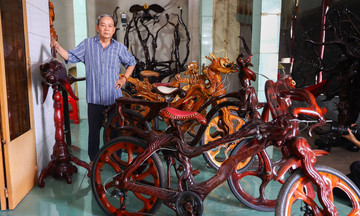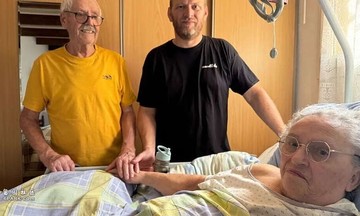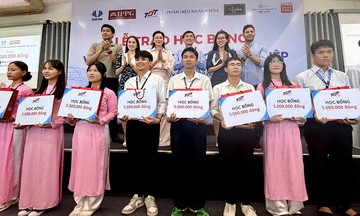In the early summer of 2024, Nguyen Van Thanh and Mai Thi Phuong, factory workers in Ninh Binh City, received a frantic call from Dat’s grandmother. "Dat has a nosebleed, bleeding gums, and a persistent high fever," she told them.
The couple immediately left work and rushed their son to the hospital. Initial tests revealed low platelet and white blood cell counts.
 |
Four-year-old Tien Dat, suffering from bone marrow failure, is being treated at the National Institute of Hematology and Blood Transfusion. Photo courtesy of the family |
Four-year-old Tien Dat, suffering from bone marrow failure, is being treated at the National Institute of Hematology and Blood Transfusion. Photo courtesy of the family
After a week of treatment, Dat's condition seemed to stabilize, offering a glimmer of hope to his worried parents. However, the bruising continued to spread, and the boy's skin became pale. In 10/2024, they took him to the National Institute of Hematology and Blood Transfusion in Hanoi.
A bone marrow biopsy confirmed their worst fears. Doctors informed Phuong that Dat's red blood cells, white blood cells, and platelets were all critically low, putting him at risk of brain hemorrhage and infection. The diagnosis: bone marrow failure.
Bone marrow failure is a rare and life-threatening condition in children. The bone marrow stops producing enough blood cells. Low red blood cells lead to fatigue and pallor due to lack of oxygen. Reduced white blood cells weaken the immune system, leaving the child vulnerable to infections. Low platelets mean even minor cuts can cause uncontrolled bleeding.
Phuong, 23, recalls the moment she heard the news, tears streaming down her face. "He's only three, how could he have such a serious illness?" she sobbed, collapsing outside the doctor's office.
Dat underwent an initial two-week treatment, followed by frequent hospital readmissions for transfusions of red blood cells and platelets. "Doctors scheduled checkups every two weeks, but he rarely made it past one week without needing more transfusions," his father, Thanh, 28, added.
Immunosuppressive drugs proved ineffective. Regular bone marrow biopsies showed no improvement. In 6/2025, genetic testing revealed the underlying cause: a duplicated mutation on two crucial genes, rendering standard treatments useless.
Dat's only hope is a stem cell transplant, costing approximately one billion VND (43,000 USD). Time is of the essence; delays increase the risks. This sum is far beyond the means of the working-class couple.
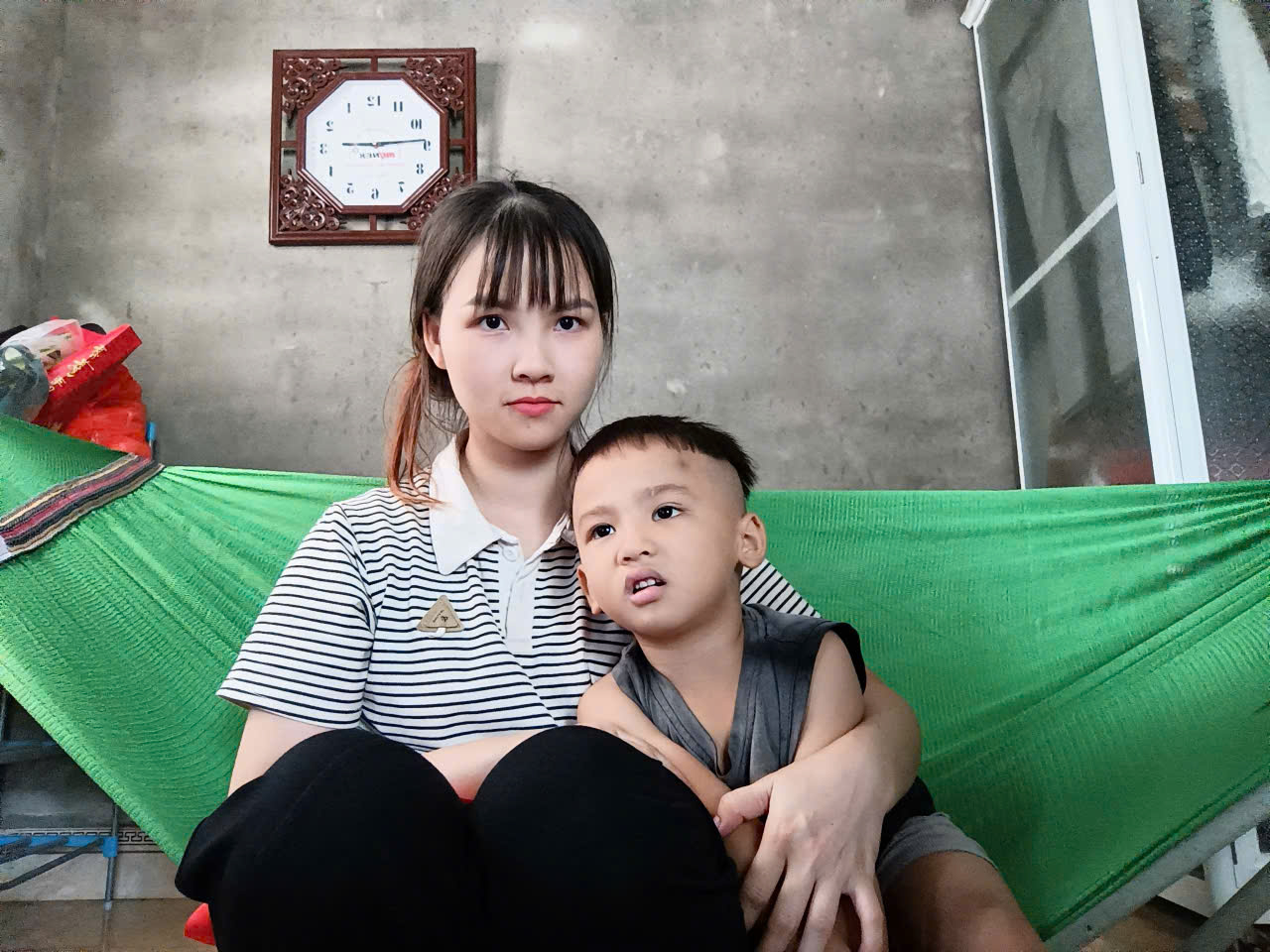 |
Phuong and her son Tien Dat at their home in Khanh Hoi, Ninh Binh. Photo courtesy of the family |
Phuong and her son Tien Dat at their home in Khanh Hoi, Ninh Binh. Photo courtesy of the family
Hoping for a miracle, the couple conceived a second child, hoping to use the newborn's umbilical cord blood for a transplant. But this brought new challenges. They juggled work and hospital visits. In the final months of her pregnancy, Phuong commuted over 50 km daily while Thanh cared for Dat, struggling to maintain their meager income.
The crisis peaked during Phuong's maternity leave. She had to give birth in Hanoi for umbilical cord blood banking services, incurring a cost of 60 million VND (2,600 USD). They resorted to high-interest loans to cover the expenses.
Dr. Tran Thanh Tung, Dat's physician since his initial diagnosis, confirmed the boy's poor response to various medications. The family had to purchase many drugs not covered by insurance, and Dat remains dependent on blood transfusions. The travel and treatment costs place an immense burden on the impoverished family.
"A stem cell transplant offers the best chance of a full recovery, but the cost is prohibitive for the family," Dr. Tung stated.
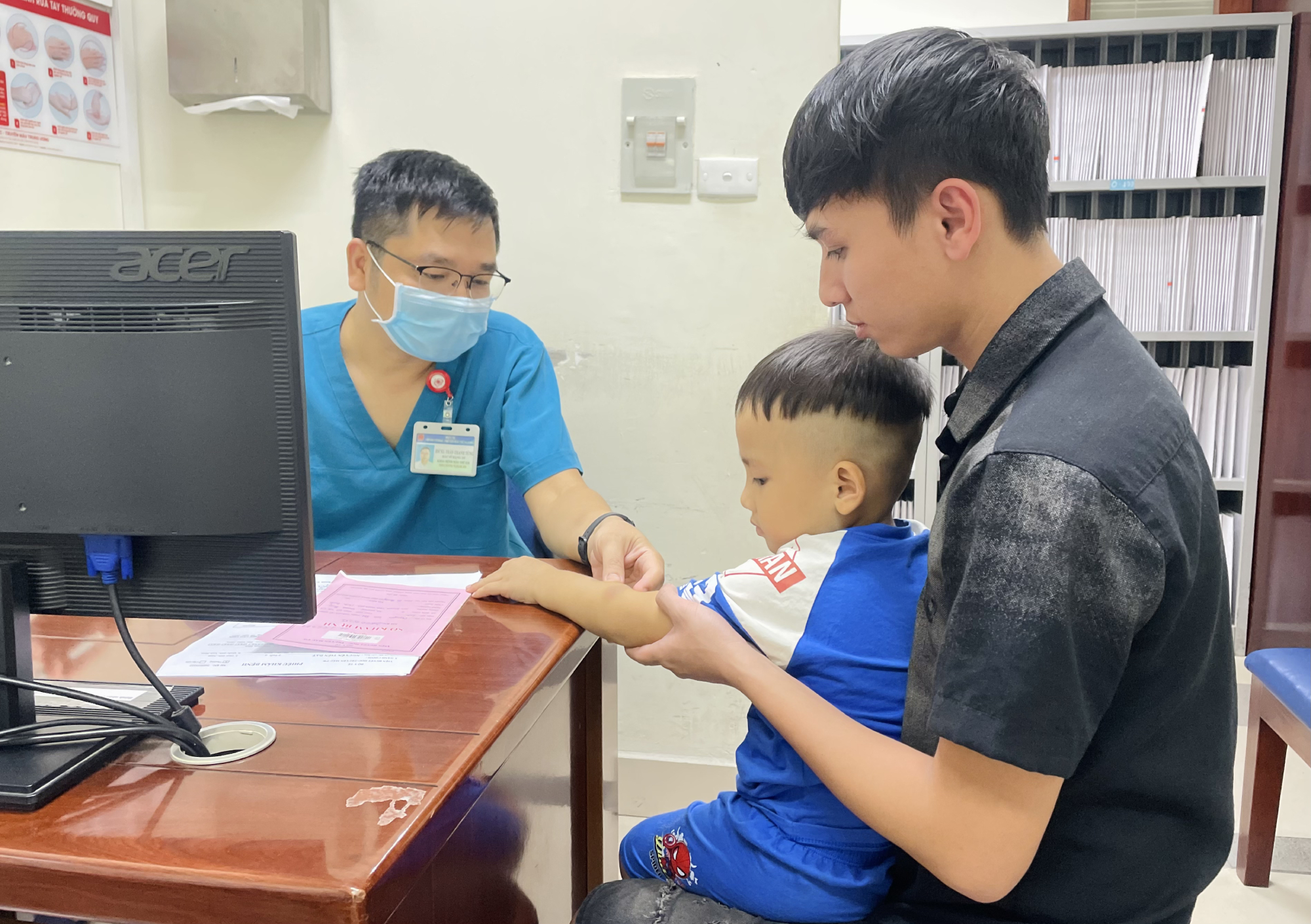 |
Dr. Tung examines Dat during a recent hospital visit on 4/9. Photo: Phan Duong |
Dr. Tung examines Dat during a recent hospital visit on 4/9. Photo: Phan Duong
Spending sleepless nights by Dat's bedside, watching his frail body entangled in medical equipment, Thanh yearns for the time before his son's illness. Back then, their busy work schedules left only Sundays for family time. A simple walk or a balloon brought Dat immense joy, but what he cherished most was playing with his parents.
"His wishes were so simple, and I regret not giving him more. It's a bitter thought," Thanh says, his voice choked with emotion.
The Hy Vong (Hope) Foundation, in collaboration with Ong Mat Troi (Mr. Sun), has launched the Mat Troi Hy Vong (Sun of Hope) program to support children with difficult circumstances. Every contribution brings hope to the future generation. Donations can be made here: |
Program name: Ten cua ban - Mat troi Hy vong
Program ID: 195961
Phan Duong




